#galleria de marie
Text

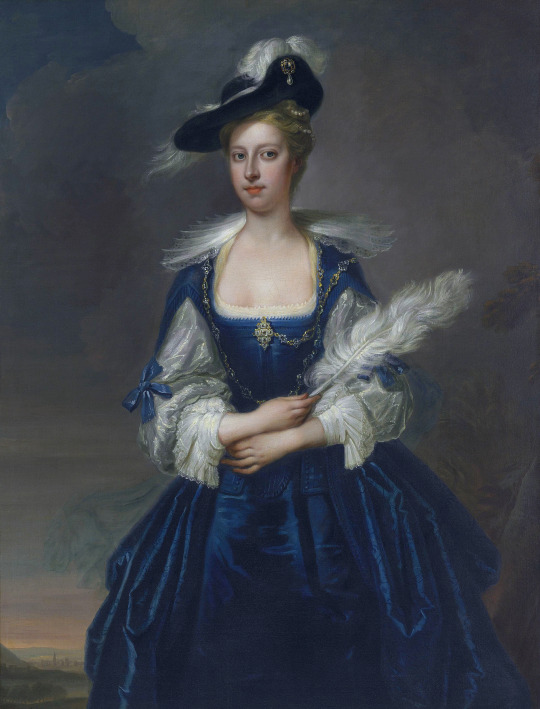
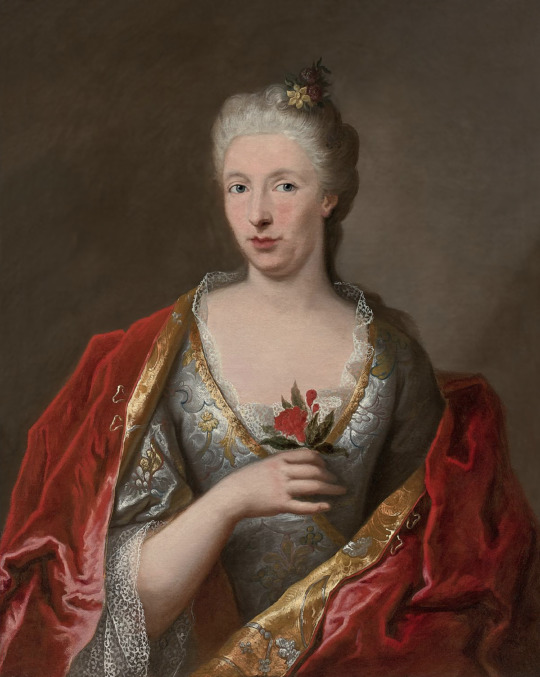
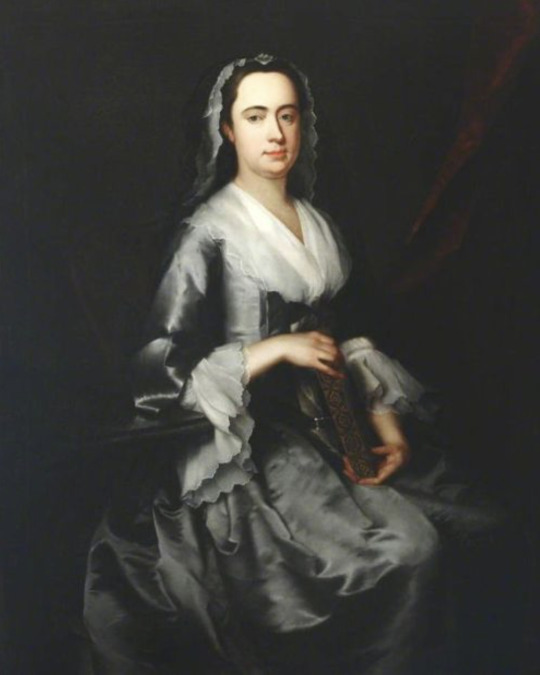
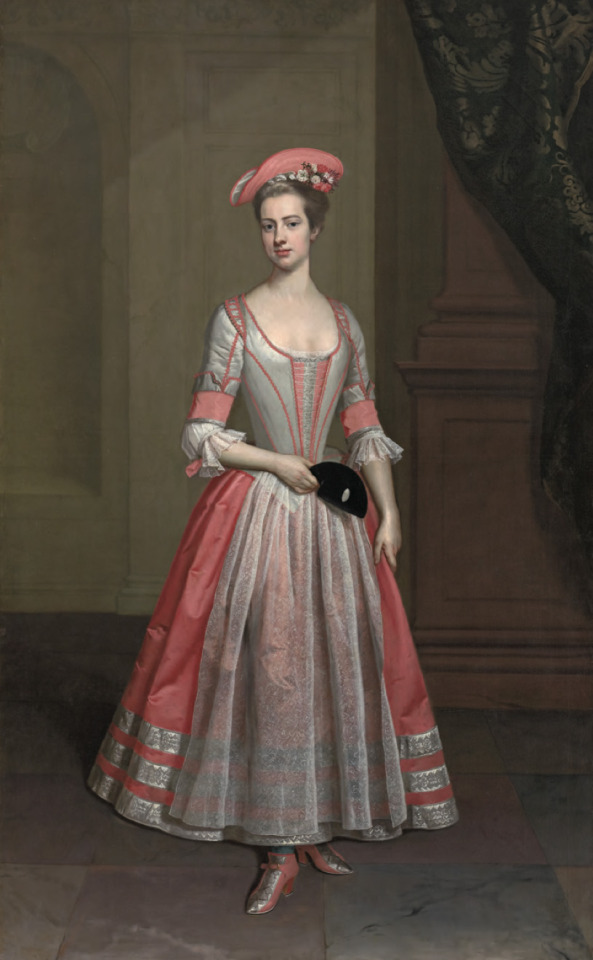
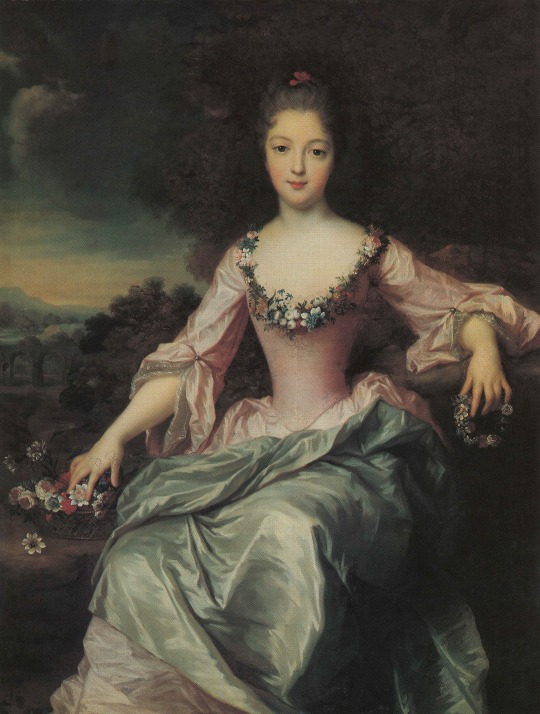

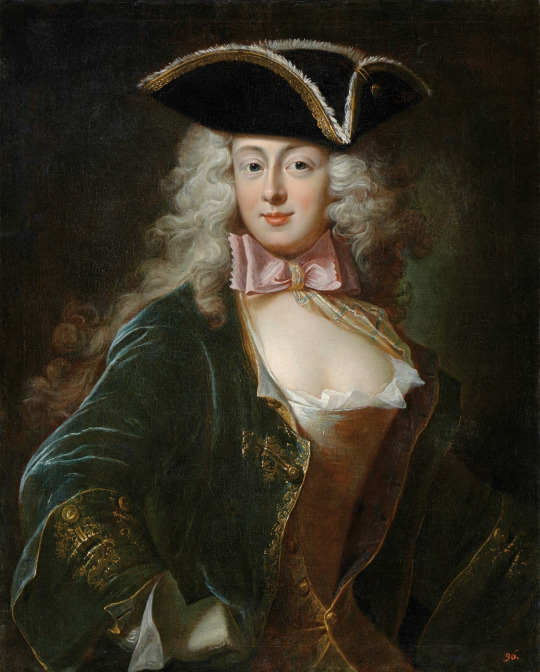

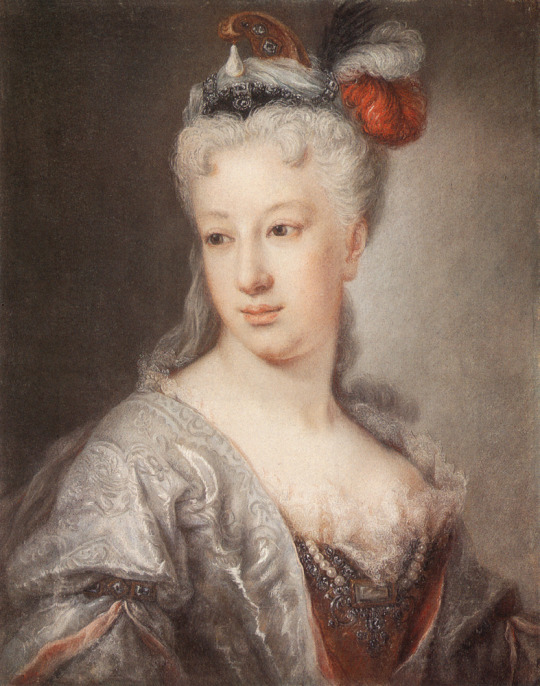

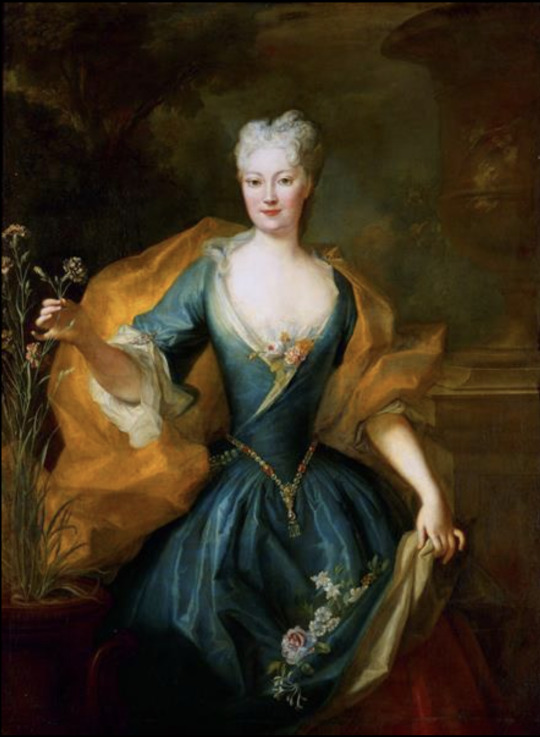

1720s dress -
Top left 1720 (probably) Princess Rakoczi by Nicolas de Largillierre (National Gallery - London, UK); From paintings-art-picture.com/paintings/archives/534/largilliere-nicolas-de-princess-rakoczi; removed spots throughout image and print in lower rt corner 152.0X2000.
Top right ca. 1720 (based on date of marriage) Elizabeth Dunch, later Lady Oxenden, by Thomas Hudson (auctioned by Christie’s). From their Web site; fixed obvious spots w Pshop 2449X3215.
Second row left ca. 1720 Dame dite madame Élisabeth Parisot by entourage of Jean-Baptiste Oudry (on auction by Tajan). From invaluable.com-auction-lot-ecole-francaise-vers-1720-entourage-de-jean-bapti-42-c-20e48bc868; fixed creases w Pshop 2990X3747.
Second row right ca. 1720 Mrs or Miss Mary Miller by the circle of Jonathan Richardson the elder (location ?). From titam.tumblr.com 1228X1536.
Third row ca. 1720 Henrietta Hobart, The Hon. Mrs Howard, later Countess of Suffolk, in a masquerade dress attributed to Thomas Gibson (Blickling Hall - Blickling, Norfolk, UK). From the National Trust's Blickling Hall Illustrated Picture List 816X1321.
Fourth row 1720 Marie Anne de Bourbon Condé by Gustaf Lundberg (auctioned by Nordén Auktioner). Probably from their Web site 3871X5117.
Fifth row 1721 Louise Anne de Bourbon, Mademoiselle de Charolais by Charles Antoine Coypel (location ?). From jeannedepompadour.blogspot.com/2012/03 820X1000.
Sixth rów left 1722 (before) Emerencjanna Pociej née Warszycka by Ádám Mányoki (Pałac Łazienkowski - Warszawa, Poland). From Wikimedia; too many flaws to fix 1608X2000.
Sixth row right 1722 Élisabeth-Charlotte d'Orléans, duchesse de Lorraine, avec son second fils François-Étienne par Alexis Simon Belle (location ?) From www.altesses.eu/princes290.php 823X1188.
Seventh row 1722 Marchesa Maria Guicciardini, née Rinuccini by Giovanna Fratellini (Galleria degli Uffizi - Firenze, Toscana, Italy). From www.pastellists.com; fixed left half of upper edge with Photoshop 787X1000.
Eighth row left 1723 Liselotte von der Pfalz by Hyacinthe Rigaud (auctioned by Tajan). Posted to Foro Dinastias by Minnie on 7 February 2010; removed flaws in background with Photoshop 614X1024.
Eighth row right 1724 Countess Karoline Friederike Lubomirska by Louis de Silvestre (private collection). From the-athenaeum.org 1768X2414.
Ninth row 1724 The Garter by Jean-François de Troy (location ?). From tumblr.com/catherinedefrance fixed obvious spots w Pshop 662X800.
#Princess Rakoczi#sucrcote#V waistline#Nicolas de Largillierre#1720s fashion#Rococo fashion#Louis XV fashion#Georgian fashion#Elizabeth Dunch#Thomas Hudson#ruff#Élisabeth Parisot#Jean-Baptiste Oudry#cross over bodice#Mary Miller#Jonathan Richardson the Elder#fichu#Henrietta Hobart#Thomas Gibson#apron#Marie Anne de Bourbon Condé#Gustaf Lundberg#Basque neckline#notched sleeves#Louise Anne de Bourbon#Charles Antoine Coypel#cap#fan#lace enggageantes#Emerencjanna Pociej
16 notes
·
View notes
Photo
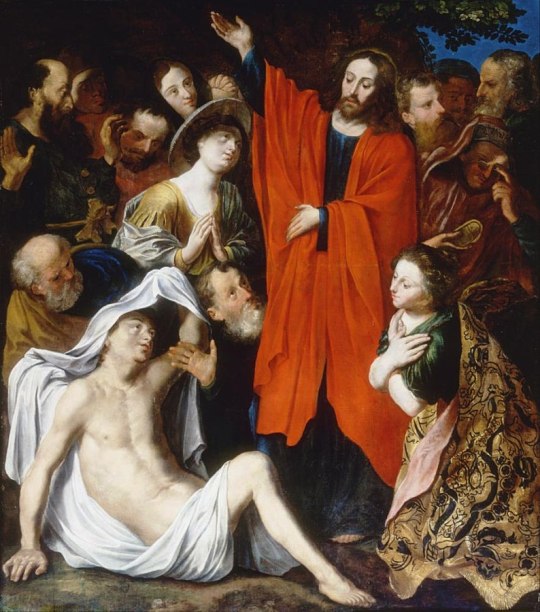
Attributed to Antoon van den Heuvel - The Resurrection of Lazarus -
oil on canvas, 173 × 197 cm (68.1 × 77.5 in)
Sint-Baafskathedraal, Ghent, belgium
Antoon van den Heuvel, Antoine van den Heuvel or Anton van den Heuvel (nickname: 'don Antonio') (c. 1600 – 5 August 1677) was a Flemish history painter and draughtsman. After training and working in Antwerp and Rome, he returned to his native Ghent where he was one of the important creators of altarpieces for the churches in the region.
Antoon van den Heuvel painted mainly religious scenes and portraits. He is usually regarded as a representative of the international Caravaggesque movement. His Lamentation in the Church of Borsbeke relies upon a painting by the Dutch Carravagist Gerard van Honthorst of the same subject for its composition and a number of motifs.
His style is, however, not that easily reduced to the Caravaggesque movement. His early work showed a preference for contrasting colours and strong lighting, with little use of transitional tones. But compared to his contemporary Jan Janssens, one of the foremost representatives of the Ghent Caravaggisti, Antoon van den Heuvel rarely showed Caravaggesque elements. Only in one work, 'Mary with the Christ Child and the Rosary' of 1634 (Church of Nazareth, Belgium, he adopted one of the motifs of Caravaggio: 'The Madonna with the snake' (Rome, Galleria Borghese).
Van den Heuvel's style is in its linear compositions and bright lighting more Classicist in nature and closer to the work of Agostino Carracci, Annibale Carracci and Lodovico Carracci and their followers. He must have seen their work during his residence in Rome.
Van den Heuvel also borrowed motifs and compositions of contemporary Flemish painters such as Rubens and Caspar de Crayer.
His later work between 1640 and 1650 is less colourful and therefore appears less expressive.
Van den Heuvel also made designs for engravings. The paintings (some of them after designs by Rubens) that he (and other painters) made on the occasion of the Joyous Entry of Cardinal-Infante Ferdinand of Austria in Ghent in 1635 were engraved to be included in a publication authored by Willem van der Beke (Guilielmus Becanus). The publication entitled Serenissimi principis Ferdinandi Hispaniarum infantis S.R.E. cardinalis triumphalis introitus in Flandriae metropolim Gandavum was published by Johannes Meursius in Antwerp in 1636. Leading Antwerp engravers Jacob Neefs, Pieter de Jode II and Antony van der Does made the engravings for the publication.
A portrait painting made by van den Heuvel was used by the prominent engraver Paulus Pontius as the basis for his engraving of a portrait of the Flemish poet Jeremias Pierssene.Guillaume Duvivier, an engraver who was active in Ghent in the 17th century, made an engraving after a painting of Antoon van den Heuvel which shows two servant women in a kitchen. This genre subject is atypical for van den Heuvel who mainly painted religious scenes and portraits.
32 notes
·
View notes
Text
Rosa Bonheur
https://www.unadonnalgiorno.it/rosa-bonheur/

Rosa Bonheur, artista francese del XIX secolo, autrice di memorabili ritratti di animali, è stata la prima donna insignita della Legion d’Onore sebbene la storia dell’arte tenda a dimenticarla.
Dichiaratamente omosessuale, libera e indipendente, è stata tra le prime donne a indossare i pantaloni. Per farlo, doveva chiedere un’autorizzazione alle autorità che, ogni sei mesi, era costretta a rinnovare.
Nata col nome di Marie Rosalie Bonheur, il 16 maggio 1822 a Bordeaux, era la figlia maggiore del pittore Raymond Bonheur e di Sophie Marquis.
Ai suoi tempi le donne non potevano frequentare le Scuole di Belle Arti e il padre fu il suo maestro e quello dei fratelli e sorelle.
Invece di andare a copiare i quadri del Louvre preferiva stare in campagna e frequentare le fiere di animali che adorava.
Espose per la prima volta nel 1841, a diciannove anni al Salon di Parigi. A ventisei vinse la sua prima Medaglia d’oro, tra artisti come Corot, Ingres e Delacroix.
Per trovare l’ispirazione girava per i mercati di animali e i macelli indossando pantaloni, coi capelli corti e un sigaro in bocca per confondersi tra la folla.
Il suo quadro Aratura nelle campagne di Nevers, del 1949 è oggi esposto al Museo d’Orsay.
La fama internazionale era arrivata con La fiera di cavalli, arrivata al Metropolitan Museum di New York nel 1887, ancora oggi uno dei quadri più apprezzati della struttura.
La sua fortuna artistica è stata molto legata al mercato inglese, era molto apprezzata dalla regina Vittoria, e a quello statunitense.
È stato un raro esempio di artista che è riuscita a guadagnare in vita con le sue opere. Riuscì infatti a comprare il castello di By, a Thomery, vicino Fontainebleau, dove allestì il suo atelier e organizzò gli spazi per i suoi animali. Ci viveva con il suo primo amore, Nathalie Micas, anch’ella pittrice, conosciuta quando aveva quattordici anni da cui non si separò mai sino alla morte di lei, avvenuta nel 1889.
Allevava animali esotici e coltivava le sue passioni, musica, letture, teatro, ma anche sigari, caccia, cavalli. Sezionava i cadaveri degli animali per studiarli meglio.
Riceveva scrittori come Victor Hugo, Gustave Flaubert, i musicisti più famosi dell’epoca, Georges Bizet, Jules Massenet, Charles Gounod, appassionata d’opera, si recava spesso Parigi per assistere agli spettacoli.
Anche Buffalo Bill, che aveva conosciuto quando aveva visitato l’accampamento del Wild West Show, lo spettacolo che portava in giro per l’Europa, dove aveva visto per la prima volta i bisonti e altri animali esotici.
Dal loro incontro nacque un celebre ritratto a cavallo dell’ospite americano, che le aveva donato un abito dei nativi visibile ancora oggi nella ex dimora dell’artista.
Nel 1865 è stata insignita della Grande Croce della Lègion d’Honneur dall’imperatrice Eugénie, moglie di Napoleone III, che aveva visitato il suo atelier e insistito per poterle consegnare la più alta onorificenza francese.
Anni dopo la scomparsa di Nathalie, si innamorò della per la pittrice statunitense Anna Klumpke, con ha vissuto fino alla morte e che è diventata la sua erede universale.
Ha lasciato la terra il 25 maggio del 1899 nel Castello di By. È sepolta a Parigi nel cimitero di Père-Lachaise.
I quadri, gli acquarelli, i bronzi e le incisioni presenti nel suo studio, così come la sua collezione personale, furono venduti alla galleria Georges Petit, a Parigi, nel 1900. Oggi il suo atelier è aperto al pubblico come Musée de l’atelier Rosa Bonheur a Thomery.
La sua biografia è stata scritta, nel 1908, da Anna Klumpke, la sua ultima compagna.
Nel 2022 per il bicentenario della sua nascita è stata allestita una mostra al Museo di Belle arti di Bordeaux e successivamente al Musée d’Orsay.
Nel suo castello, ora ribattezzato Château Rosa Bonheur, l’attuale proprietaria si batte per far riscoprire l’opera della pittrice e valorizzare la dimora che contiene molti documenti d’archivio ancora inediti rimasti conservati nei solai e magazzini e che, poco a poco, vengono studiati per arricchire la conoscenza di una donna emblematica della sua epoca la cui memoria non deve andare persa.
Si stima che al momento della sua morte al castello fossero presenti circa 4.500 opere. Grazie alle lastre fotografiche di Anna Klumpke, scoperte nei solai, si è potuto ricostruire in parte un inventario delle opere scomparse. Le immagini sono state il cuore dell’esposizione Le Musée des oeuvres disparues che presentava un centinaio di opere inedite della pittrice rivelandone aspetti meno conosciuti come le caricature, la pittura storica e paesaggistica, le illustrazioni di leggende inglesi.
Nel castello dove ha abitato è possibile dimorare e godere del meraviglioso giardino dove teneva i suoi amati animali.
2 notes
·
View notes
Text
Paul Gauguin, dalla Francia ai Tropici
Il pittore che cercava la calda luce dei mari del Sud…
Paul Gauguin nacque a Parigi il 7 giugno 1848, primogenito del giornalista francese Clovis Gauguin e Aline Marie Chazal, figlia di André Chazal, incisore, e di Flora Tristàn, una scrittrice peruviana.
I genitori di Paul erano grandi oppositori del regime politico di Napoleone III, per cui furono condannati all'esilio e nel 1849 dovettero lasciare la Francia, per partire alla volta del Perù.
Il padre di Gauguin morì durante il viaggio e Aline e i figli arrivarono in Perù da soli, accolti dalla famiglia materna a Lima.
Paul passò parte della sua infanzia in Perù insieme alla sorella Marie Marceline e solo sei anni dopo tornò in Francia insieme alla madre e alla sorella, poiché era morto il nonno paterno.
Dal 1859 Gauguin studiò nella città di Orléans presso le Petit-Sèminaire e sei anni dopo effettuò il test per entrare a far parte della Marina Militare, che però non superò.
Nello stesso anno decise di imbarcarsi in un mercantile come allievo pilota, partendo nel mese di dicembre dal Porto di LeHavre e arrivò in Brasile, a Rio de Janeiro, per poi fare vari viaggi a Panama, nelle Isole polinesiane e nelle Indie.
Gauguin nel 1867 seppe della morte della madre in Francia e, addolorato, decise di arruolarsi nella Marina militare francese, svolgendo le sue mansioni sulla nave francese Jéröme Napoleon e partecipando alla guerra franco-prussiana.
L'anno dopo fu congedato dalla Marina militare e tornò a Parigi, dove cominciò a lavorare presso l'agenzia di cambio francese Bertin ma, grazie all’amicizia del pittore Ėmile Schuffenecker e su consiglio del suo tutore Gustave Arosa, iniziò a dedicarsi alla pittura, intraprendendo la professione da autodidatta.
Nel 1873 conobbe Mette Sophie Gad, una giovane ragazza danese, che sposò nello stesso anno, da cui ebbe Ėmile, Aline, Clovis, Jean-René e Paul.
L'anno dopo il pittore conobbe Camille Pissarro, grande impressionista francese, che gli diede consigli importanti che influenzeranno il suo modo di dipingere.
Nel 1883 Paul lasciò il suo lavoro da impegnato per dedicarsi completamente alla pittura, non ottenendo però dei grandi successi, così lasciò la famiglia in Danimarca, per trasferirsi in Bretagna, una regione francese e li conobbe Ėmile Bernard, oltre ai fratelli Theo e Vincent Van Gogh.
Paul nei due anni successivi partì alla volta di Panama insieme al pittore Charles Laval e poi si recò nella Martinica e, al suo ritorno in Francia, visse per un breve periodo ad Arles con Vincent Van Gogh.
Tra il 1889 e il 1890 Gauguin tornò in Bretagna e l'anno dopo partì per Tahiti, dove dipinse nelle sue tele scene di vita quotidiana e le persone del luogo.
Nel giugno 1893 lasciò Tahiti per far ritorno in Francia ed espose quarantuno opere realizzate durante il soggiorno tahitiano, tre tele dipinte in Bretagna e alcune sculture presso la Galleria d'arte francese di Paul Durand-Ruel.
L'anno dopo, da aprile a novembre, soggiornò nuovamente in Bretagna, a Pont Avene, diventata celebre per le vacanze estive di molti artisti.
Nel luglio 1895 Paul partì dal porto di Marsiglia, per poi giungere a Paapete, nell'isola di Tahiti, dove si stabilirà fino al 1901, quando si trasferì nelle Isole Marchesi.
Gauguin continuò a lavorare fino al giorno della sua morte, avvenuta l'8 maggio 1903 a Hiva Oa.
Read the full article
0 notes
Text
“Of Glory” by Giulio Bussi (1),Translated by Sir Aubrey de Vere (2), Samuel Waddington, comp. “The Sonnets of Europe”. 1888.
Glory, what art thou? Thee, despite of pain,
And want, and toil, the brave heart cherisheth:
Thee the pale student courts, wasting, in vain,
His primal youth, thy worshipper in death.
Glory, what art thou? Thine imperial breath
Speaks woe to all: with pangs do men obtain
An empty boon that duly perisheth,
Whose very fear of loss outweighs the gain.
Glory, what art thou then? A fond deceit,
Child of long suffering, empty air, a sweet
Prize that is sought with toil, but never found:
In life, by every envious lip denied;
In death, to ears that hear not a sweet sound:
Glory—thou fatal scourge of human pride!
I care not whose it was, mine it is now.
Illustration: “Camillus, Allegory of Glory” (3), ceiling fresco by Mariano Rossi (4)- Galleria Borghese - Rome, Italy.(5)
Notes: Count Giulio Bussi (born March 12, 1646 in Viterbo - died April 14, 1714 in the same city) was an Italian poet. Giulio Bussi was chamberlain to Pope Clement XI, and died in Viterbo on April 14, 1714. He was a member of the Academy of Arcadia in Rome. In addition to several musical dramas, comedies, and various poems, he published a verse translation of Ovid's “Heroides: Epistole eroiche d'Ovidio” translated in terza rima, Viterbe, 1703-1711, 2 parts in-12. It has been inserted, in part, into t. 24 of the large collection of translations of classical poets, printed in Milan, 1745, in-4°
(2) Sir Aubrey (Hunt) de Vere, 2nd Baronet (28 August 1788 – 5 July 1846)[3][2] was an Anglo-Irish poet and landowner. De Vere was the son of Sir Vere Hunt, 1st Baronet and Eleanor Pery, daughter of William Pery, 1st Baron Glentworth and his first wife Jane Walcott. He was educated at Harrow School, where he was a childhood friend of Lord Byron, and Trinity College, Dublin. He married Mary Spring Rice, the daughter of Stephen Edward Rice and Catherine Spring, and sister of Thomas Spring Rice, 1st Baron Monteagle of Brandon, in 1807. He succeeded to his father's title in 1818. He and Mary had five sons, including the third and fourth baronets, Aubrey and Stephen de Vere, and the poet Aubrey Thomas de Vere, and three daughters, two of whom died in infancy.
The Hunt/de Vere family estate for 300 years (1657–1957), including the period of the de Vere Baronetcy of Curragh, is the present-day Curraghchase Forest Park, in County Limerick. De Vere spent most of his life on the estate and was closely involved in its management. He suffered much trouble from his ownership of the island of Lundy, which his father, who was a notoriously poor businessman, had unwisely purchased in 1802, and which became a heavy drain on the family's finances. Sir Vere was never able to find a purchaser for Lundy, and it took his son until 1834 (or 1830) to dispose of it.
Sir Aubrey stood for election in the 1820 General Election and came in third with 2921 votes. He changed his surname from Hunt to de Vere on 15 March 1832, in reference to his Earl of Oxford ancestors, dating back to Aubrey de Vere I, a tenant-in-chief in England of William the Conqueror in 1086. He served as High Sheriff of County Limerick in 1811.
Wordsworth called his sonnets the most perfect of the age. These and his drama, “Mary Tudor: An Historical Drama”, were published by his son the poet Mr. Aubrey Thomas de Vere in 1875 and 1884.
De Vere produced numerous works over his lifetime. The most notable are: “Ode to the Duchess of Angouleme” (1815), “Julian the Apostate: A Dramatic Poem” (1822), “The Duke of Mercia: An Historical Drama” [with] “The Lamentation of Ireland, and Other Poems” (1823), “A Song of Faith: Devout Exercises and Sonnets” and his most famous work, “Mary Tudor: An Historical Drama.”
(3) Marcus Furius Camillus (possibly c. 448 – c. 365 BC[1]) is a semi-legendary Roman statesman and politician during the early Roman republic who is most famous for his capture of Veii and defence of Rome from Gallic sack after the Battle of the Allia. Modern scholars are dubious of Camillus' supposed exploits and believe many of them are wrongly attributed or otherwise wholly fictitious.The cognomen Camillus derives from the title of an aristocratic youth who helped in religious duties; it is possible that a young Camillus served in such a position. His filiation is identical with that of the consul of 413 BC, Lucius Furius Medullinus, which may indicate that Medullinus and Camillus were brothers.
Camillus is first firmly recorded as entering public office in 401 BC. He served in that year and again in 398 BC as consular tribune against the Falisci and the Capenates. Both were tribes near Rome and Veii. His first supposed office was that of censor (before having held any other public office) in the year 403 BC. He was then supposed to have, as dictator completed a campaign against Veii which saw the city captured in 396 BC. The specific story of Veii's capture in Livy is mostly legendary. After a ten-year siege (the third Veientine war) – "obviously modelled on the Greek legend of the Trojan war" – the Alban Lake rises supernaturally after a supposed prophecy of Veii's destruction in its "Books of Fate". The Romans then extirpate the prodigy by building a tunnel to drain the lake after being so instructed by the oracle at Delphi. Camillus, as commander, then persuades Veii's goddess, Juno Regina, to leave the city and move to Rome. Archaeological remains near Veii include blocked drainage tunnels from the fifth-century, which may indicate the possibility that this story in Livy arises a Romans breakthrough into the city through them.
Following the capture of the city, Livy reports that Camillus had its free population sold into slavery before the land was resettled with Roman citizens with land allotments of seven jugera. Archaeological evidence points to Romans switching quarries: after the capture of Veii's better-quality quarries, Roman structures switch largely to using stone sourced therefrom, which may suggest enslaved Veientine quarry workers. Camillus then celebrates a triumph and dedicates a temple of Juno on the Aventine. It is likely that many of the details of his return in Livy were copied from the less historically distant triumphal entrances of Scipio Africanus or Sulla.
In 394 BC, he supposedly secured the surrender of the Falisci in their main town of Falerii Veteres (modern Civita Castellana) after refusing to accept pupils from a schoolmaster as hostages. Much of the Livian narrative about the exchange with the schoolmaster is meant to recount an exemplum which stresses the importance of Roman good will (Latin: fides) and the importance of gentlemanly aristocratic behaviour. After taking Veii and Falisci, Camillus is supposed to have been prosecuted. Accounts differ: he may have been accused by the quaestors of misappropriating spoils of war or of his extravagance in purchasing four white horses for his triumph. Whatever the charge, though a quaestorian trial for misappropriation is more likely, Camillus was reportedly convicted and sent into exile. Historians believe this story of disgrace before the courts is modelled on fates of Achilles and Scipio Africanus and is meant to draw comparison with Themistocles and Gnaeus Marcius Coriolanus. The underlying source for the story likely postdates the Sullan period and is an "evident anachronism".The story of conviction, however, likely did not happen and was instead adduced to place Camillus away from Rome when the Gallic sack occurs, excusing him of any blame for Rome's defeat.
In 390 BC (Varronian), more likely in actuality 387 BC, a large group of Gauls crossed the Apennines into northern Etruria.They advanced until they reached Roman territory and there defeated Rome's army at the Battle of the Allia. In the following days, they entered Rome and sacked it. They then induced the surrender of Roman holdouts on the Capitoline hill before receiving a large ransom of gold and withdrawing north. This account is corroborated by Greek sources as early as the 4th century BC; Polybius places the sack in the same year as the Peace of Antalcidas and the siege of Rhegium.
According to Livy, after the fall of the city, Camillus is recalled from exile at Ardea by the people and appointed again as dictator – even though a consular tribune was available to nominate a dictator in the normal fashion – in the city's hour of need. Then, at the climax of the Gallic sack, when a thousand pounds of gold is being weighed out, Camillus and a hastily organised army returns and defeats the Gauls, saving the city and recovering the ransom. This story was probably a creation of Roman annalists during the first century BC; Ogilvie in his Commentary on Livy, calls it "one of the most daring fabrications in Roman history.”
Other traditions have different narratives: for example, the Livii Drusi are supposed to have by single combat with a Gaul named Drausus recovered the same ransom; Plutarch records a fragment of Aristotle asserting that "a certain Lucius" (probably a Lucius Albinius who is recorded to have secreted away the Vestal Virgins and sacred objects to Caere) having saved the city. Polybius reports that rather than being defeated by Camillus, the Gauls occupied the city for some seven months before the Romans bought them off and they departed of their own accord to deal with an invasion of their territory by the Veneti. While the literary sources assert Rome was sacked and had to be rebuilt, there is no archaeological evidence of major damage to pre-fourth century BC buildings in the forum, which indicates that the sack – if it occurred – consisted largely of stealing portable property.
After the sack, Camillus is supposed to have led the opposition to a proposal circulating among the plebs to relocate the city to Veii. This story also cannot be accepted and is more likely "a reflection of the tensions that arose concerning the distribution of the conquered territory of Veii" and to introduce "anti-plebeian elements" into the Camillan narrative. The speech does not appear in Polybius and may have been invented c. 122 BC in order to oppose by historical precedent Gaius Gracchus' proposal to establish a colony at Carthage with further embellishment of its anti-Italian themes during the time of the Social War.
Regardless, the ancient tradition records that within a year after Rome was reduced to ruins, the city had been completely rebuilt and all rebellions by Roman allies suppressed due to the extraordinary leadership of Camillus, who is therefore regarded as the city's "second founder.” In these victories, he is supposed to have dedicated three gold saucers to Juno for victory against the Volscians, Aequians, and Etruscans all the next year in 389 BC. None of these achievements are mentioned in Polybius or Diodorus.
After his probably fictitious victories, Livy next reports Rome sending Camillus to take the city of Tusculum in 381 BC. The city, already surrounded by Roman territory, immediately surrenders and the inhabitants thereof are given Roman citizenship with some level of self-rule, becoming the first Roman municipium. Later sources view this as an act of magnanimity due to the later elevated status of municipia but at the time it was likely little more than annexation; Tusculum would be one of the first to revolt in the Second Latin War. Both Camillus' role in Manlius' sedition and his later dictatorship (engaging the Gauls and plebeian reforms) may be anachronistic and fictitious insertions.
The account of Dio, coming from a Byzantine summary by Zonaras, asserts Camillus was elected dictator in 384 BC to put down the sedition of Marcus Manlius Capitolinus, who is believed to be trying to make himself king. Camillus reportedly has Manlius arrested by a slave before a trial; Manlius is convicted and then thrown from the Tarpeian Rock. No such attribution is given in the accounts of Livy and Plutarch, who note Camillus merely as one of the six consular tribunes in that year.[
According to Livy, there are ten years in which Gaius Licinius Stolo and Lucius Sextius Lateranus were elected plebeian tribunes continuously. During the last five or six years, they blocked the election of all magistrates in an attempt to pass what would become the Licinio-Sextian rogations. Camillus is alleged to have been elected dictator in 368 BC and attempted to obstruct their attempts, without success. But the next year, he is appointed dictator again. He then reconciles the plebeians and the patricians with a proposal to appoint a patrician-only praetor and curule aediles (in exchange for plebeian eligibility to the consulship); all accept the passage of the rogations and domestic harmony is restored; Camillus then constructs a temple to Concordia. "Very little of this narrative can be accepted as it stands". While Diodorus Siculus reports the length of the anarchy to have been merely one year, it is implausible that Rome could have been without magistrates for more than a few months. More damningly, a passage of Aulus Gellius' “Attic Nights” (5.4) preserves a fragment of Numerius Fabius Pictor that shows that alleged years where tribunes blocked all elections were a late annalistic invention, likely to line up Greek and Roman chronologies.
The three alleged rogations touched on a number of topics. The first rogation was a mechanism for debt relief. The second imposed a possession limit of 500 jugera of public land. The third was the reform that abolished the consular tribunate and required the election of consuls, one of which had to be a plebeian. Gary Forsythe, in “Critical history of early Rome”, accepts that the first law is consistent with voiced concerns over indebtedness from this period, that the second (limits on public land possession) is attested to in later speeches, and that the third is reflected in the consular fasti. Livy includes in the same year of this compromise, 367 BC, another alleged victory by Camillus over the Gauls. Modern scholars are especially suspicious of this report, especially because Livy notes confusion in his own sources over this victory, which is alternatively attributed to Titus Manlius Torquatus.
According the ancient Roman tradition, Camillus died during an epidemic that hit Rome in 365 BC. However, it is unlikely that any evidence of Camillus' death was known in later times: Münzer, writing in the “Realencyclopädie,” believes later annalists simply assumed Camillus died in the epidemic.
The traditional account of Camillus' life comes from Livy and Plutarch's eponymous “Life.” But these were based on a larger annalistic tradition which painted Camillus as the dominant figure in this period of history; Livy, for his part, organised his fifth and sixth books around Camillus' career (Camillus enters public office at the start of the fifth book and leaves it at the end of the sixth). Little evidence of this tradition survives, though fragments of Quintus Claudius Quadrigarius' work indicate that the myth of Camillus was well-established by the 80s and 70s BC.
The name Camillus is attested in the Etruscan François Tomb, built c. 300 BC near Vulci. One of the paintings therein describes a "Gneve Tarchunies Rumach" (probably Gnaeus Tarquinius the Roman) being killed by a "Marce Camitlnas" (possibly Marcus Camitilius or Marcus Camillus). It is not known, however, what specific legend the tomb depicts. Some scholars have suggested that Camitlnas refers to the Camillus of this article, but such attribution is problematic. Scholars believe Camillus qua person probably existed: the fasti, if believed, record his importance and influence in Roman public life at this time. But, in general, the quality of the sources – which interject "plenty of myth, embellishment, and fantasy" – led Mary Beard, in the book “SQPR,” to write "Camillus is probably not much less fictional than the first Romulus". Mommsen, writing in “Römisches Strafrecht,” called Camillus' legend "the most dishonest of all Roman legends". Tim Cornell, writing of Camillus, calls him "the most artificially contrived of all Rome's heroes". The source of scholars have suggested that Camillus emerged from a popular oral tradition which linked the names Camillus, Manlius Capitolinus, and Sulpicius to inscriptions placed on the temple of Juno Moneta (erected in 345 BC by Lucius Furius Camillus).
By the late republic, after centuries of embellishment from the fourth to the first century BC, the Romans believed that Camillus had captured Veii, saved the city from the Gallic sack, saved the city from foreign threats on all sides, opened the highest magistracies to the plebeians, ensured domestic harmony, and largely settled the struggle of the orders. Through it all, they believed he had held six consular tribunates and been dictator five times. For these reasons, he was hailed as the second founder of the city. A bronze statue of Camillus also bedecked itself on the rostra in the Forum.
His reputation by the Late Republic and Early Empire was such that Camillus was a source of exempla: fables giving lessons for Romans on how to act in line both with morals and with Roman tradition and procedures. One of the most famous ones is during Camillus' capture of Faliscii: one of their schoolmasters defects, bringing with him to the camp his pupils who are Faliscan nobles' children. Camillus, displaying his exemplary fides, has the schoolmaster reprimanded and punished by the pupils; the Faliscans then surrender the city before Camillus' good faith. Camillus is similarly alleged to have resigned a dictatorship to which he was appointed merely because of faulty procedure; Livy mentions it – an event that "almost certainly never took place" – as an example of Roman legal scruples. In all, Camillus is mentioned in Livy's “Ab urbe condita” as an example to be followed eight times, an "unusually high frequency", usually in relation to his alleged successes as a general, moderation in the face of hot-headed colleagues, and triumphant recall from exile.
The memory of Camillus became part of the public image of the first Roman emperor Augustus. The history of Livy, for example, may have been written to coincide at the beginning of a great year consisting of 360–365 years. Starting with Romulus, the cycle reaches a peak under King Servius Tullius before a second founding under Camillus, completing the cycle. The next cycle has a second peak in the time of Scipio Africanus before Augustus enters as the figure to re-found Rome again and restart the great year, with Livy suggesting that Romulus, Camillus, and Augustus are coequal heroic figures.
(4) Mariano Rossi (7 December 1731 - 24 October 1807) was an Italian painter, persisting in what had become an anachronistic Rococo style amid an ascendant neoclassical environment. His placement legions of figures in a complex scenography and quadrature recalls the work of Pietro da Cortona.
Mariano was born to poor parents in Sciacca, Sicily. He trained first in Palermo, then in Naples, and finally in Rome, where he studied under Marco Benefial. He was patronized by the illuminated charity of men of fashion (that is, wealthy individuals) He was paid 400 zecchini by the Cardinal Cardinal Bernis for a canvas depicting Joshua commanding Sun to stand still. He painted for the churches of Purgatorio and Santa Lucia in Sciacca, Sicily. In 1766, he was called to paint frescoes for the royal court in Turin. He then returned to Rome, where he painted a fresco in the grand salon of the Villa Borghese. During 1775-1779, he painted a large ceiling fresco depicting Marcus Furius Camillus Fighting Brennus and his Gauls, while Romulus Entreats Jupiter to Help Rome. The room displays some of the ancient Roman statuary, previously collected by Camillo Borghese. Other contemporary painters active in the Villa were Laurent Pecheux and Domenico de Angelis. Mariano joined the Academy of St Luke in 1776.
The Napoleonic invasion of Rome caused him to leave for Sicily. There he painted a Roger I Liberating of Sicily from the Saracens for the Palermo Cathedral. With the Bourbon restoration in Naples, he briefly painted again at the Palace of Caserta. But on moving back to Rome in 1804, he died and was buried in the church of Santa Susanna, Rome.
(5) The great hall of the Casino in the Villa Borghese, whose interiors were remodeled in a Neoclassical style by Antonio Asprucci, was adorned with a ceiling fresco that constitute a finale to the Baroque idiom, by that time altogether passé in Rome. The pictorial program takes up the theme of the classical forebears that great Roman families had so successfully invoked to create historical legitimacy for themselves. The Sicilian painter Mariano Rossi blended the legend of the victorious hero Furius Camillus with an allegory on Rome, its founders, its virtues, and its glory.
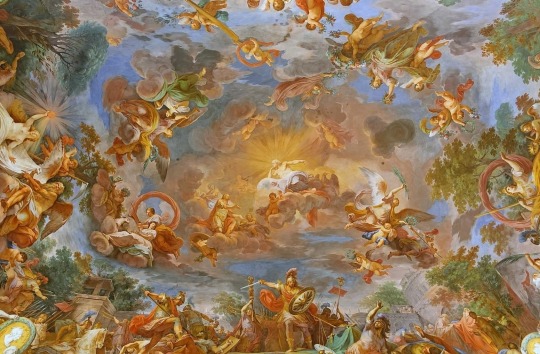
0 notes
Text
0 notes
Photo

𝐂𝐇𝐈𝐌𝐄𝐒 𝗚𝗥𝗘𝗘𝗡𝗛𝗜𝗟𝗟𝗦 𝗠𝗼𝘃𝗲-𝗶𝗻 PROMO / 𝗥𝗲𝗻𝘁-𝘁𝗼-𝗼𝘄𝗻 𝘁𝗲𝗿𝗺𝘀 ✅𝟱% 𝗦𝗽𝗼𝘁 𝗗𝗼𝘄𝗻𝗽𝗮𝘆𝗺𝗲𝗻𝘁 ✅15% payable in 21 Months 0% Interest ✅80% Balance thru Cash or Bank Financing 𝗔𝘃𝗮𝗶𝗹𝗮𝗯𝗹𝗲 𝗨𝗻𝗶𝘁 𝗧𝘆𝗽𝗲𝘀 & 𝗦𝗶𝘇𝗲𝘀 Studio Unit - 22 sqm to 37sqm 1 Bedroom Unit - 38sqm 2 Bedrooms - 43 sqm to 73 sqm NEAR BY AREAS: 𝗦𝗖𝗛𝗢𝗢𝗟𝗦 ✅O. B. Montessori ✅Fountain International School ✅De La Salle Greenhills ✅Immaculate Conception Academy ✅St. Paul Pasig ✅Xavier School and the University of Asia 𝗛𝗢𝗦𝗣𝗜𝗧𝗔𝗟 & 𝗛𝗘𝗔𝗟𝗧𝗛𝗖𝗔𝗥𝗘 🏥 ✅The Medical City ✅Belo Medical Center ✅Cardinal Santos Medical Center 𝗠𝗮𝗹𝗹𝘀 & 𝗦𝗵𝗼𝗽𝗽𝗶𝗻𝗴 𝗖𝗲𝗻𝘁𝗲𝗿𝘀🛍 🛒 ✅Greenhills Shopping Center ✅The Robinsons Magnolia ✅Robinsons Galleria ✅Unimart ✅Fox Square ✅The Promenade ✅Gloria Maris ✅Wack Wack Golf and Country Club ✅Club Filipino are certainly near the project 𝑇ℎ𝑖𝑠 𝑑𝑖𝑠𝑡𝑖𝑛𝑐𝑡𝑖𝑣𝑒 40-𝑠𝑡𝑜𝑟𝑒𝑦 𝑒𝑛𝑐𝑙𝑎𝑣𝑒 𝑖𝑠 𝑐𝑜𝑚𝑝𝑙𝑒𝑚𝑒𝑛𝑡𝑒𝑑 𝑏𝑦 𝑎 𝑐ℎ𝑎𝑟𝑚𝑖𝑛𝑔 𝑎𝑟𝑟𝑎𝑦 𝑜𝑓 𝑙𝑖𝑓𝑒𝑠𝑡𝑦𝑙𝑒 𝑎𝑚𝑒𝑛𝑖𝑡𝑖𝑒𝑠 𝑡𝑜 𝑟𝑒𝑗𝑢𝑣𝑒𝑛𝑎𝑡𝑒 𝑡ℎ𝑒 𝑚𝑖𝑛𝑑 𝑎𝑛𝑑 𝑏𝑜𝑑𝑦. 📌Main Lobby 📌Life Fitness Gym 📌Play Pod 📌Game Station 📌Private Theater 📌Leisure Pool 📌Kiddie Pool 📌Sky Lounge 📌Sky Garden For Interested kindly Message us for more details. https://www.instagram.com/p/CkDUTInpUW5/?igshid=NGJjMDIxMWI=
0 notes
Text
Tinderbox wolfchase mall

#Tinderbox wolfchase mall full
Seasons 52 was dedicated on February 15, 2010. Meanwhile, two new Streetscape restaurants had debuted. Penney, a charter 1967 anchor, pulled the proverbial plug on their WESTSHORE store in late 2020. The building was renovated and re-opened, as a Dick's Sporting Goods, April 25, 2014. On May 4, 2013, Saks Fifth Avenue at WESTSHORE PLAZA was shuttered. The WPG merged with the Glimcher Realty Trust in early 2015. Known as the Washington Prime Group, it assumed ownership of several of Simon's "Grade B" malls. Indiana's Simon Property Group created a spin-off Real Estate Investment Trust in May 2014.
#Tinderbox wolfchase mall full
In mid-2013, Glimcher established full ownership of the WESTSHORE property and relinquished its ownership interest in LLOYD CENTER. The region's second enclosed shopping center, GATEWAY MALL and WESTSHORE PLAZA. There were also freestanding "Penneys" and Firestone Car Care centers. Woolworth 5 & 10 and Pantry Pride supermarket. Juvenile Shoes / Villa Shops / Waldenbooks / Walgreen Drug (with luncheonette) / Wolf Brothers men's wear / Zales JewelersĮnveloping approximately 623,400 leasable square feet, WEST SHORE PLAZA housed thirty-eight stores, including Walgreen Drug, Piccadilly Cafeteria, an F.W. O'Neil Company Card Shop / Hollywood Travel, Incorporated / Jarman Shoes / Lawton's Jewelers / Lerner Shops ladies' wear / Marquis Cleaners & Laundry / Mary Jane Sportswear / Merle Norman Cosmetic Studio / Modern Beauty Salon / National Shirt Shops / Orange Bowl snack bar / Piccadilly Cafeteria / Poller's ladies' wear / Scot Ties / Singer Sewing Center / Size 5-7-9 Shops ladies' wear / Spencer Gifts / Tellone Barber Shop / The Second National Bank of Tampa / Thom McAn Shoes / U.S. Serchia, Optometrist / Fanny Farmer Candies / Firestone Car Care (outparcel) / Florida Shoe Service / George M. WOOLWORTH (with luncheonette) / PANTRY PRIDE supermarket / Baker's Shoes / Baron's of Tampa men's wear / Colony Shops ladies' wear / Doctor Louis F. PENNEY (with Beauty Salon, Colonial Coffee Shop and freestanding Auto Center) / F. MAAS BROTHERS (with Beauty Salon and Suncoast Restaurant) / J.C. WEST SHORE PLAZA SHOPPING CITY TENANTS 1967: It was originally a dumbell plan mall, with a small east side protrusion (which housed a Pantry Pride supermarket). Be sure to check out all our animal statues.In 1967, the shiny new WEST SHORE PLAZA encompassed approximately 623,400 leasable square feet and contained thirty-eight stores beneath its roof. You will find Ebony Visions, Painted Ponies, Wizard of Oz and Gone With the Wind collectibles, and Fairie Glen. Be sure to check out all our wildlife figurines. Brands include Willow Tree, Britto, Acme, Ninja Warriors & the kimmidoll collection, Just the Right Shoe, flasks, chess and backgammon sets. We have plenty for the smoker, but don't forget our gift lines. We also carry ashtrays, cigar carriers, tobacco pouches, cutters, travel humidors, humidification solutions and accessories, and more. We have many humidors available in all price ranges. We've got all your smoking accessories as well. To light your cigars, pipes and cigarettes, we carry Zippo, Xikar, and Lotus lighters. If you are looking for e-cigarettes and liquid nicotine, we have them as well! Be sure to check out our awesome selection of hookahs, shishas, hookah parts and accessories. We offer a wide range of bulk and tinned pipe tobaccos including English and Aromatic blends. With pipes starting around $21.95, there's something for everybody. Some brands include: Savinelli, Peterson, Ferndown, Ascorti, Caminetto, Maestro Beraldi, and Nording. We also have a large variety of pipes in stock. Call or e-mail us for availability and prices. Some of the brands we carry include Fuente, Opus X, CAO, La Gloria Cubana, Hoyo de Monterrey, Punch, Macanudo, Cohiba, Partagas, Acid, Padron, and Romeo & Julieta, just to name a few. The Tinder Box in Wolfchase Galleria has MOVED!Īt Tinder Box in Memphis (Lakeland) we have lots of cigars. Welcome to the Tinder Box in Memphis (Lakeland)!

0 notes
Text

By: Amy Fredrickson
Artemisia Gentileschi was born on July 8, 1593, in Rome and is one of the most distinguished artists of her generation. She challenged the societal limitations placed on female artists during her time and became a successful history painter in her own right. Her career took her from Rome to Florence, Venice, London, and Naples, where she worked for elite patrons such as the Medici family in Florence and King Philip IV of Spain.
Artemisia was the eldest of Prudenzia Montoni and Orazio Lomi Gentileschi’s (1563–1639) five children as well as their only daughter. She was born into an artistic family. In addition to her father, her grandfather Baccio Lomi (c.1550–1595) and her uncle Aurelio Lomi (1556 – 1622) were well-known Pisan painters.

Originally a mannerist-style painter, Orazio became a follower of Caravaggio’s practice of working from nature, and he trained Artemisia to paint in this manner. As a child, Artemisia worked in his studio, mixing pigments and making varnishes. She learned the techniques of chiaroscuro, which was characteristic of Caravaggist paintings. In turn, Artemisia was a second-generation champion of Caravaggio’s realism; her first recorded paintings are almost indistinguishable from her father’s, such as Susanna and the Elders (1610). Painted a few years later, Judith and Her Maidservant (c.1614-20) in the Palazzo Pitti sets her apart from Orazio for its emotive protagonists and deep tenebrism.
Orazio hired painter Agostino Tassi (1578 – 1644) to tutor Artemisia. In the spring of 1611, Tassi raped her, and he refused to fulfill his promise to marry her. Orazio took him to trial because the crime against his daughter was a crime against his family’s honor. Artemisia’s infamous 1612 trial was well-documented and lasted seven months. She was forced to provide a testimony under torture. Found guilty, Tassi was sentenced to banishment from Rome for five months; however, his punishment was not enforced.
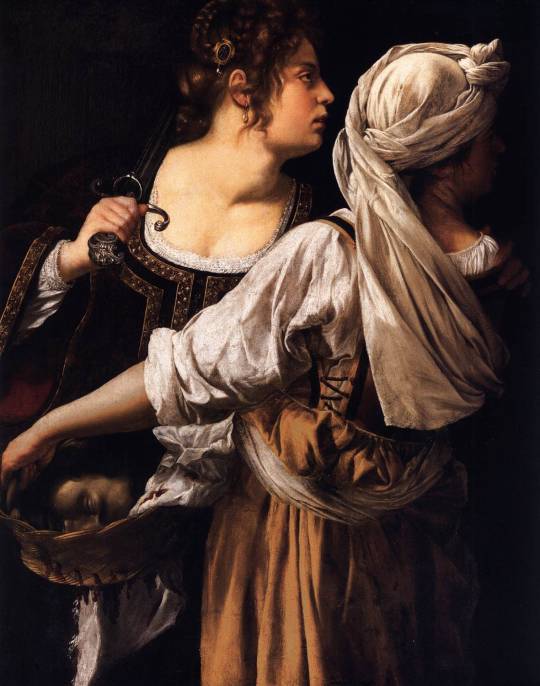
Shortly after, Artemisia married Florentine artist Pietro Antonio di Vincenzo Stiattes (b.1584), and they moved to Florence. Before their arrival, Orazio wrote to the dowager Grand Duchess of Tuscany, Christina of Lorraine, requesting her help in preventing Agostino Tassi's release from the Corte Savella where he was being jailed. In return, Orazio offered to send her one of Artemisia's paintings, Judith and Her Maidservant (c.1614-20).
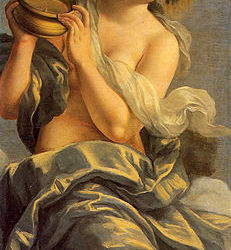
Artemisia established herself as an independent artist in Florence, and she began developing her distinct style. She pushed against the societal norms established for women during her time, such as relegating women painters to the genre of still life or portraiture. Instead, she concentrated on history painting. She established herself within Florentine literary circles, which led to commissions from the Medici family and Michelangelo Buonarotti the Younger. She painted Judith and Holofernes (c. 1612–1621) and the Penitent Mary Magdalene (1620–1625) in the Palazzo Pitti for the Medicis, and for Casa Buonarotti, she painted a ceiling painting called the Allegory of Inclination (1615–1617). Her Florentine paintings illustrate her development beyond her father’s teachings and those of Caravaggio as she introduced a more polished surface, brighter colors, and sophisticated iconography. Perhaps these advances were a product of her association with the poets, painters, and intellectuals she had encountered in Florence. In 1616, Artemisia became the first female member of the Accademia delle Arti del Disegno.

Artemisia was business savvy; she ran her own studio and controlled her finances. The move to Rome may have coincided with Grand Duke Cosimo II de’ Medici’s death in 1621. His successor was Ferdinando, his ten-year-old son, who was governed by his mother and grandmother, and ultimately, their tastes leaned toward penitent biblical figures rather than Artemisia’s bloodletting heroines.
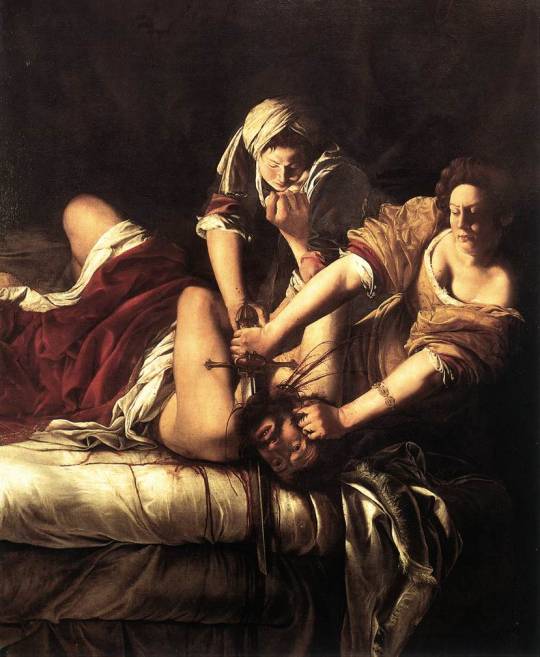
In 1620, Artemisia and her husband returned to Rome for approximately six years. Judith and her Maidservant (c. 1623-25), now in Detroit, dates to this time, although how many paintings Artemisia produced during her second Roman period is unclear. Little is known about her involvement in Roman artistic circles of this period, yet Simon Vouet’s portrait of Artemisia for the papal secretary Cassiano dal Pozzo provides some insight that she was associated with an elite circle of patrons and possibly the Academy of the Desiosi.
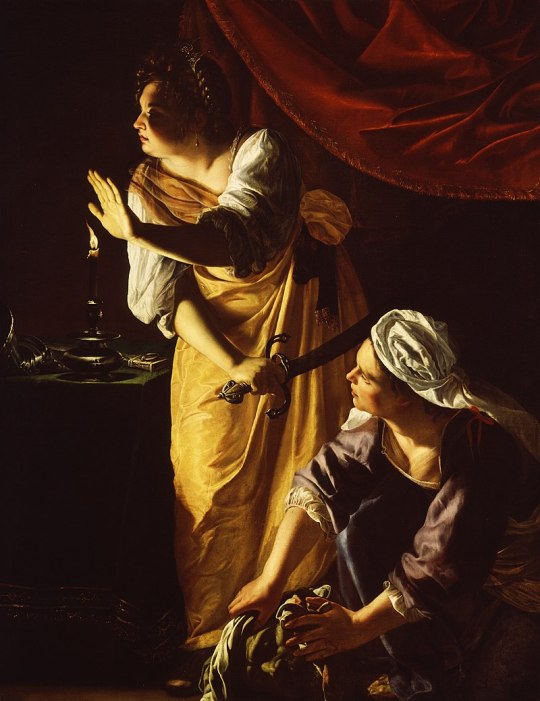
In 1627, Artemisia traveled to Venice for a few years to possibly attain commissions. During her Venetian sojourn, she participated in literary circles such as the Accademia degli Incogniti. Venetian poetry of this time alludes to her status in these circles. While in Venice, Artemisia began to specialize in monumental biblical and historic women; the subject of these paintings featured the triumphs and tragedies of these heroines.

In 1629, the Spanish viceroy, the Duke of Alcalá, invited Artemisia to Naples, and a year later, she resided in Naples and ran a successful studio. A remarkable example of this period is her Esther before Ahasuerus (1627-1630), which hints at her Venetian sojourn. The incorporated grandiose movements and ornamental dress emit an operatic air.

Her recently discovered paintings, such as Corsica and the Satyr (c. 1630-35) and Christ and the Samaritan Women (c. 1637), reveal that the 1630s marked a high point in her career. What sets these works apart from her earlier paintings are her lyrical subjects and the loose Venetian-inspired brushwork of broad white strokes with colors applied on top. During the 1630s, she began incorporating rich colors, such as ochres, blues, and cinnabar red. Artemisia created dimension and drama through her use of such rich hues.

Artemisia left Naples in 1638 to assist her ill father in London. Orazio worked for the English court beginning in 1626 and was working on ceiling paintings for the Great Hall in the Queen’s House in Greenwich. By 1640, she returned to Naples, where she remained until her death. It is unknown when she died, but a recently discovered document shows her living in Naples in August 1654. It is plausible that Artemisia died during the 1656 plague that had ravaged Naples and killed half of its inhabitants.
Images:
Self-Portrait as the Allegory of Painting, c.1630, oil on canvas, 96,5 x 73,7 cm., Royal Collection, Windsor
Susanna and the Elders, 1610, oil on canvas, 170 x 121 cm., Schloss Weissenstein, Pommersfelden
Judith and Her Maidservant, c.1614-20, oil on canvas, 114 x 93.5 cm., Galleria Palatina (Palazzo Pitti), Florence
Allegory of Inclination, c. 1615, oil on canvas (ceiling), 152 cm × 61 cm., Casa Buonarroti, Florence
The Penitent Mary Magdalen, 1620-25, oil on canvas, 146 x 109 cm., Galleria Palatina (Palazzo Pitti), Florence
Judith Beheading Holofernes, 1612-21, oil on canvas, 199 x 162 cm.,
Galleria degli Uffizi, Florence
Judith and her Maidservant, c. 1623–1625, oil on canvas, 184 x 141.6 cm., Detroit Institute of Art.
Esther Before Ahasuerus, c. 1627-1630, oil on canvas, 208.3 cm x 273.7 cm., Metropolitan Museum of Art.
Corsica and the Satyr, c.1630-35, oil on canvas, 155 x 210 cm., Private Collection.
Christ and the Samaritan Women, c. 1637, oil on canvas, 267.5 x 206 cm., Private Collection.
References:
Sheila Barker, 'Artemisia's Money: The Entrepreneurship of a Women Artist in Seventeenth-Century Florence,' Artemisia Gentileschi in a Changing Light, ed. by Sheila Barker (London, 2018), pp 59-88
Breeze Barrington, 25 April 2020, "The Trials And Triumphs Of Artemisia Gentileschi," Apollo Magazine. [online] <https://www.apollo magazine.com/artemisia-gentileschi-london/>
Ward R. Bissell, Artemisia and the Authority of Art: Critical Reading and
Catalogue Raisonné (University Park, 1999)
Ward R. Bissell,‘Artemisia Gentileschi-A New Documented Chronology,’ The
Art Bulletin 50, no. 2, (1968), pp. 153–168.
Patrizia Costa, ‘Artemisia Gentileschi in Venice’, Source: Notes in the History of Art 19, no. 3, (2000), pp. 28-36
Mary D. Garrard, 'Artemisia Gentileschi's 'Corisca and the Satyr,'' The Burlington Magazine 135, no. 1078 (1993), pp. 34-38
Mary D. Garrard, Artemisia Gentileschi: The Image of the Female Hero in Italian Baroque Art (Princeton, 1989)
Jesse Locker, Artemisia Gentileschi: The Language of Painting (New Haven, 2015)
#artemisia#artemisia gentileschi#florence#rome#caravaggisti#Caravaggio#Baroque Art#women artists#female artist#heroines#judith#judith and holofernes#susanna and the elders#self portrait
49 notes
·
View notes
Text
Arte di/per colmare il vuoto. Grazie Yves Klein

Avevo deciso di prendere un giorno di pausa dal blog, causa scarsità di idee. Ma per una serie di circostanze, mi sono trovato a pensare che, queste pagine che apriamo per condividere le nostre passioni, in realtà, altro non sono che i diari segreti della nostra generazione. Beh, non vi nego che stasera tra una discussione e l’altra, ho avuto un immagine di me quattordicenne, pieno di brufoli, depresso da far schifo e pieno di rabbia dentro che un vulcano in piena eruzione al confronto è una barzelletta. Dodici anni fa il mio rifugio dalla realtà quotidiana fatta di insuccessi, del “signora è dotato ma non si applica” e dal “se continui così nella vita non concluderai mai niente”, altro non era che l’arte; e forse non è un caso che appena ho potuto scegliere per il mio futuro ho deciso di studiare beni culturali prima, storia dell’arte poi! ma soprattutto non è stato un caso il fatto che ho deciso di scrivere la tesi di laurea in museologia. Eh già! studiare i musei, analizzarli in tutti i loro aspetti; studiare uno spazio al fine di creare qualcosa di unico e poter affermare con orgoglio “questo l’ho fatto io, e questa volta nessuno può dire che ho sbagliato!”. La comunicazione, che sia verbale, non verbale, pittorica, scultorea o nella tecnica di allestimento, questo è il caposaldo della mia vita e della mia ricerca, anche se, ripeto, non mi piace scrivere e sono bravo ad essere un oratore nelle mie visite guidate alle mostre, ma al mio dover esprimere giudizio, dare il mio punto di vista o parlare di qualunque cose con gli altri, preferisco la birra. Tutto questo per parlarvi di quello che è stato un esperimento formidabile che, se questo coronavirus non mi ammazza, prima o poi proverò, di modo da dare conferma a tutti quelli che lo pensano che in realtà nella mia vita non faccio un emerito cazzo!
Ma parliamo, finalmente, di questo artista, ovvero quel maledetto genio assoluto di Yves Klein, meglio conosciuto come l’inventore del colore blu.

Klein nacque a Nizza da Fred Klein e Marie Raymond, entrambi pittori. Dal 1942 al 1946, Klein frequentò l’Ecole Nationale de la Marine Marchande e la Ecole Nationale des Langues Orientales, dove cominciò a praticare il judo. Divenne amico di Arman e Claude Pascal, e cominciò a dipingere. Klein compose la sua prima Symphonie monoton nel 1947. Tra il 1948 e il 1952 viaggiò in Italia, Gran Bretagna, Spagna e Giappone, finché nel 1955 si stabilì permanentemente a Parigi dove tenne una "personale" al Club des Solitaires. I suoi dipinti monocromi vennero esposti alla Galerie Colette Allendy e alla Galerie Iris Clert di Parigi nel 1956. Klein morì a Parigi di infarto del miocardio nel 1962 a soli 34 anni di età, poco prima della nascita di suo figlio, anch'egli destinato ad essere "battezzato" Yves e a diventare artista, seppur scultore.
Considerato il precursore francese della Body Art, Yves Klein, realizzò più di mille tavole in soli sette anni, ed è noto soprattutto per i suoi dipinti monocromi. Ognuno di noi è a conoscenza delle tavole totalmente dipinte di Blu, la tonalità su cui l’artista decise di concentrarsi e di cui ne creò la “più perfetta espressione” nel 1956, un oltremare saturo e luminoso, che doveva unificare il cielo e la terra e dissolvere il piano dell’orizzonte.
Nei suoi lavori immateriali, una sua celebre opera performativa, avvenuta il 28 aprile 1958 nella Galleria Iris Clert di Parigi, prevedeva che gli acquirenti sperimentassero Il vuoto. Klein eliminò tutto l’arredamento della piccola galleria di soli 20m², ed in 48 ore pitturò di bianco l’intera stanza, con lo stesso solvente che usava per le sue tele monocrome. Intervennero più di tremila persone, cui era loro servito un cocktail blu, preparato per l’occasione. I visitatori si sentirono ispirati dalla freschezza della peregrina ed eccentrica idea, che considerarono come l’opportunità di dividere un’esperienza del qui ed ora, una manifestazione della profonda visione dell’artista, liberato dalle restrizioni del tempo e dello spazio, ai limiti di ogni percezione. “Non esistono limiti obiettivi all’espressione artistica, né nel contenuto, né nella forma. L’unica autorità che ho sempre riconosciuto è la voce dell’intimo.” Il Vuoto per Klein è senza influenze materiali, un’area dove entrare in contatto con la propria sensibilità, per vedere la realtà come appare nella sua essenza, oltre la rappresentazione. Klein esprimeva i suoi atti creativi strappando alla forma artistica l’intero contenuto: i dipinti non avevano immagini, i libri erano senza parole, la musica era una sola nota senza composizioni. La pienezza delle cose, i pieni poteri, come nel vuoto, nella loro assenza.
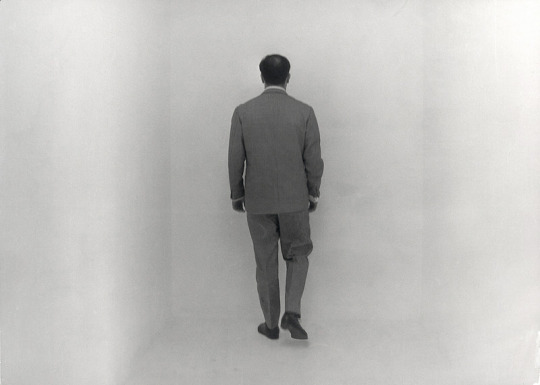

Grazie a Klein ho avuto la mia radicale e totale conversione al mondo dell’arte contemporanea. Il fatto che io lo ami così tanto è legato proprio a questa performance, se così la si può definire. Klein è stato capace di colmare il suo vuoto interiore con quello che amava, esattamente come ho fatto io e come facciamo tutti, del resto. Rifletteteci un attimino... Chi di voi non si è sentito una nullità e non ha provato quel senso di vuoto che non si riusciva a colmare con nulla? E quando questo senso di vuoto è stato colmato? Bravi, nel momento in cui avete cominciato a fare il cazzo che volevate della vostra vita.
Ecco svelato il motivo per cui amo Klein, non aggiungo altro.
Valerio Hank Vitale
#unaltroblogchenonleggeranessuno#iorestoacasa#work#smartwork#coronavirus#giornosete#art#arte#artecontemporanea#contemporaryart#blu#blue#yveskelin#klein#bluklein#vuoto#mostra#mostre#exibition#exibitions#parigi#paris#irisclert#valeriovitale
2 notes
·
View notes
Photo

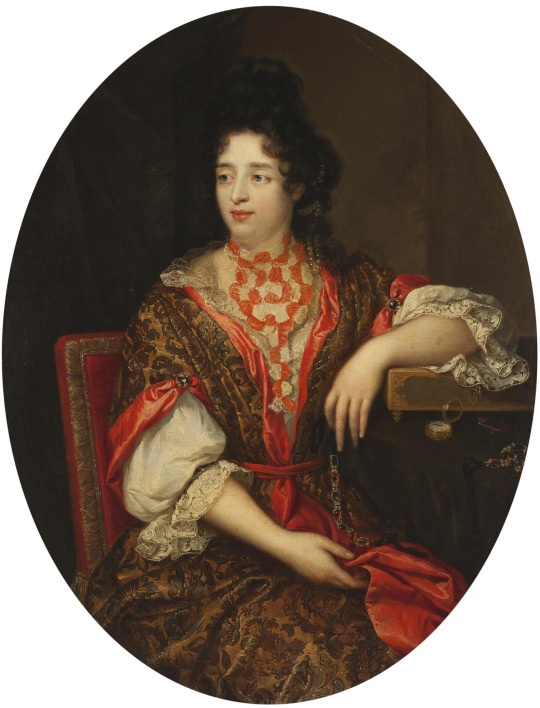

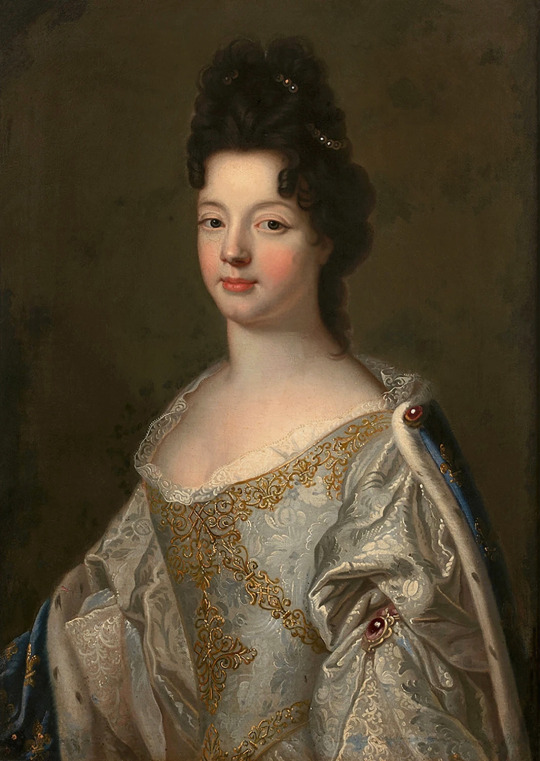
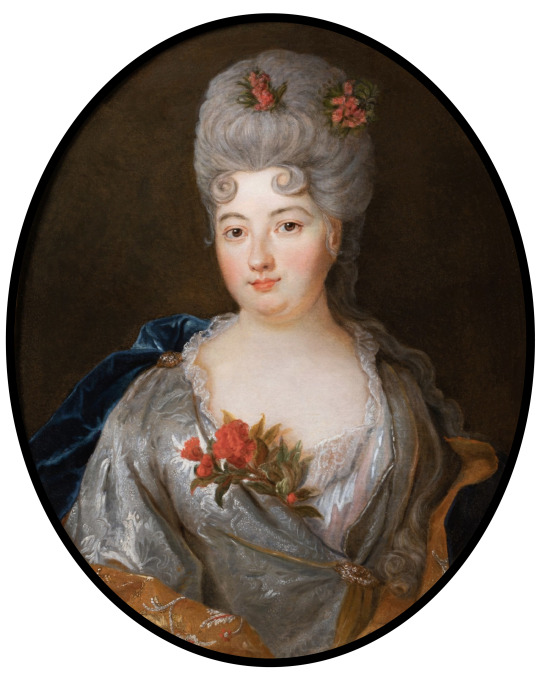


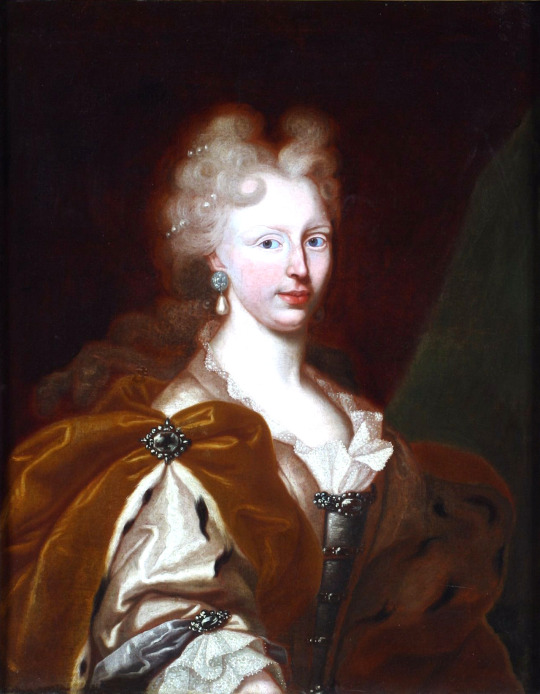
Late Louis XIV & Baroque fashion -
Top: ca. 1688 François de Troy - Lady Mary Herbert, Viscountess Montagu, previously the Hon. Lady Richard Molyneux and later Lady Maxwell, as Diana (Coughton Court, Warwickshire). From tumblr.com/blog/view/costumedufilm; fixed spots & wrinkles w Pshop, 947X1200 @72 277kj.
Second row left: 1690s Lady by Alexis Simone Belle (Hermitage). From their Web site 1434X1880 @72 832kj.
Second row right: Lady, formerly called Mrs. Deshoulieres by Nicolas de Largilliere (location ?). From tumblr.com/blog/view/sims4rococo76; erased spots & blurred cracked areas w Pshop 1204X1500 @72 550kj.
Third row: Élisabeth Charlotte of Bourbon-Orléans (1676-1744) by François de Troy (location ?). From roehenstart.tumblr.com/image/689983062298263552 1065X1500 @72 472kj.
Fourth row: 17th century Madame de Rignac by workshop of Nicolas de Largillière (location ?). From anticstore.art-92195P; erased spots w Pshop 2452X3057 @150 1.3Mj.
Fifth row left: Sophia Dorothea, Queen of Prussia by ? (location ?). From tumblr.com/blog/view/papered-in-rose-toile; enlarged to fits screen 996X1200 @72 226kj.
Fifth row right: 1700-1710 Dorothea Sophie von Neuberg by Parmese school (Galleria Nazionale di Parma - Parma, Emilia-Romagn, Italy). From tumblr.com/lenkaastrelenkaa; erased many spots w Pshop 866X1123 @72 825kj.
Bottom: Dorothea Sophia of Palatinate-Neoburg (1670-1748) after Giovanni Maria delle Piane (Stadtmuseum Düsseldorf - Düsseldorf, Nordrhein-Westfalen, Germany). From tumblr.com/roehenstart 1280X1644 @72 553kj.
#1680s fashion#1690s fashion#1700s fashion#late Louis XIV fashion#late Baroque fashion#Mary Herbert#Viscountess Montagu#François de Troy#fripon curls#curly coiffure#Swiss belt#Alexis Simone Belle#full over-sleeves#lace cuffs#Nicolas de Largilliere#Élisabeth Charlotte de Bourbon-Orléans#Madame de Rignac#Königin Sophia Dorothea#vee neckline#Dorothea Sophie von Neuberg#Giovanni Maria delle Piane
38 notes
·
View notes
Photo

12:55 pm : Daniel Buren : "Le Grand Losange, travail in situ, de Jean-Marie Rossi à Jean-Marie Rossi, de 1965 à 2016 à la Galleria Continua chez Aveline - Antiquaire Parisien, November MMXVI.
(© Sous Ecstasy)
#art#art blog#art account#art daily#art show#art paris#art therapy#art of tumblr#art of the day#art of visuals#art of photography#art lover#art addict#art community#façade#building#daniel Buren#picture#photo#photograph#photographie#photography#sous ecstasy#mes illusions sous ecstasy
1 note
·
View note
Photo

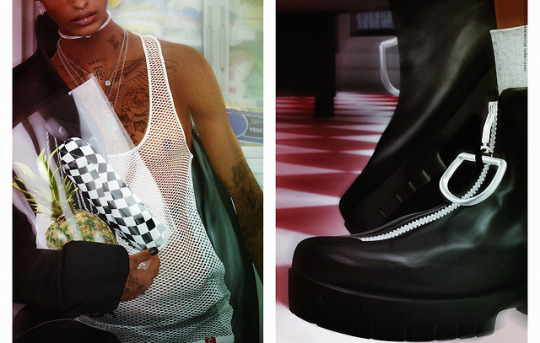
L O O K B O O K #365
Hair: Modulus - Richard (@Equal10)
Hairbase: KoKoLores - Shaved hairbase omega
Tattoo: Bolson - Leonardo (@TMD)
Jacket: Gabriel - One shoulder military jacket gacha rare
Top: COMPLEX - Zayn mesh top (@Equal10)
Septum: Cae - basic septum 1
Shorts: Clef de Peau - Kyle shorts set (@Equal10)
Shoes: Blupr/nt - D ring boots (@The Galleria Mall)
Bag: Lowen - Algema Pvc bag (@Equal10)
Grocery bag: FAKEICON - anana grocery bag (NEW!)
Earring: fashionism - Allie fringe earrings (@Cosmopolitan)
Earring/choker: MIWAS - Vapor summer gacha commons (@Equal10)
Wrist: fashionism - Simple open cuff bracelet
Wrist 2: kunst - Summer bracelets
Necklace: SEVEN - Mary matter stacked necklace (@ACCESS)
Backdrop: Pseudo - Health Mart gacha rare
Poses: BOYS TO THE BONE - Model poses
Shooting location: my studio(no slurl)
#sl#second life#modulus#kokolores#bolson#gabriel#complex#cae#clef de peau#blupr/nt#lowen#fakeicon#fashionism#miwas#kunst#seven#pseudo#boys to the bone
28 notes
·
View notes
Text
ALBERT Roger

ALBERT Roger
https://youtu.be/6RMZw4h3M8ERoger ALBERT est né le 7 octobre 1921 au Prêcheur où son père était géreur
de l’habitation Parnasse, il a été déclaré dans la commune du François.Après ses classes au séminaire collège, il part à Trinidad ( son grand père et son père y avaient été accueillis après l’éruption de la Pelée) et y suit une formation de comptable.De retour en Martinique, il se marie en 1944 avec Anne Marie Beuzelin qui lui donnera 4 enfants
et s’occupe alors de la comptabilité de l’Usine du Vauclin, de l’usine Gardel en Guadeloupe et de la compta du Docteur Lodéon ( clinique saint Paul) avec qui il gardera des liens étroits toute sa vie.Puis en 1948 il s’associe avec son oncle Victor ALBERT pour monter un bazar qui vendait parfums articles de pêche, bimbeloterie liqueurs, tabac etc…)…La boutique V&R ALBERT se situe au 6 rue Victor Hugo.Dans les années 50 il part aux USA à la conquête du marché touristique américain alors même que personne n’y croit en Martinique, Felix Hilaire Fortuné le qualifiera de « visionnaire »Dès 1953 il importe les produits de luxe en parfumerie, esthétique, articles de la table, maroquinerie, et, en 1956 ouvre une boutique "duty free" d’articles de grandes marques au 7 rue Victor Hugo, magasin très fréquenté par la clientèle américaine des bateaux de croisière qu’il aura - grâce à sa ténacité - réussi à intéresser à la Martinique
Les tour operator proposant des visites de l’ile, c’est toute une économie touristique annexe qui se développeraIl fait figure d’initiateur de « l’industrie touristique « de la Martinique,La clientèle locale n’est pas oubliée avec l’ouverture des boutiques de Cluny et de la Galleria
où comme à Fort de France sont déposées les "listes de mariage" En 1958 il conseille Loulou Boislaville pour promouvoir la culture martiniquaise, en lui donnant la possibilité de présenter son groupe folklorique le soir à bord des bateaux de croisièreConseiller du commerce extérieur de la France de 1956 à 1985, il est à l’origine de la création de l’office du Tourisme avec le docteur Rose Rosette en 1960Homme d’affaires, mais aussi homme d’une grande discrétion, il sera président du "Fourneau Economique" qui vient est aide aux plus démunis de 1987 à 1996.La France l’a honoré en le nommant Chevalier de l’ordre du Mérite touristique, Officier de la légion d’Honneur et Chevalier de l’Ordre du mérite.Comme l’a écrit Hilaire Fortuné : "il se sentait un membre à part entière de la communauté martiniquaise" Décédé le 15 juillet 2002 entouré des siens
Figures embl.
Page suiv.
Guillaume de Reynal
Read the full article
0 notes
Note
Bonjour M. Légaré, Mon nom est Marie-Pier de la galerie d’art virtuelle Arto Galleria. Nous lancerons une nouvelle plateforme transactionnelle virtuelle prochainement permettant de promouvoir le travail des artistes canadiens. Notre équipe a pris connaissance de votre travail et nous serions honorés de vous compter parmi les artistes de notre communauté. N’hésitez pas à communiquer avec nous. Cordialement, Marie-Pier Leclerc, Arto Galleria
Bonjour Marie-Pier,
Merci pour votre intérêt, je vous reviens bientôt concernant votre proposition. Entre autre je vous signale que tumblr n’est plus mon blogue, si vous désiré voir mon nouveau site et mes principales oeuvre visitez: https://andre-legare-artiste-peintre.webnode.fr/ OU: https://www.etsy.com/ca/shop/andrelegarepaintings
merci de votre intérêt.
André Légaré
0 notes
Text
0 notes